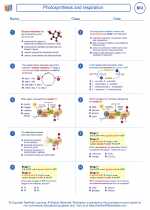Adsorption
Adsorption is the process by which molecules of a substance adhere to the surface of a solid or liquid material. This phenomenon occurs due to the attractive forces between the molecules of the substance and the surface of the material. Adsorption is commonly observed in various natural and industrial processes, such as the adsorption of gases on the surface of activated charcoal or the adsorption of pollutants by soil particles.
Types of Adsorption
Adsorption can be categorized into two main types: physisorption and chemisorption.
- Physisorption: Also known as physical adsorption, physisorption occurs due to van der Waals forces between the adsorbate molecules and the surface of the adsorbent. It is a reversible process that is typically observed at low temperatures and high pressures.
- Chemisorption: Chemisorption involves the formation of chemical bonds between the adsorbate and the adsorbent surface. This type of adsorption is usually irreversible and occurs at high temperatures.
Factors Affecting Adsorption
Several factors can influence the process of adsorption, including:
- Nature of the Adsorbate and Adsorbent: The chemical and physical properties of both the adsorbate and the adsorbent can significantly impact the adsorption process.
- Surface Area of the Adsorbent: A larger surface area provides more sites for adsorption to occur, leading to increased adsorption capacity.
- Temperature: In general, adsorption decreases with increasing temperature for physisorption, while chemisorption may be favored at higher temperatures.
- Pressure: Higher pressures can enhance adsorption, particularly for gases.
Applications of Adsorption
Adsorption has numerous practical applications in various fields, such as:
- Water and Wastewater Treatment: Adsorption processes are employed to remove pollutants and impurities from water and wastewater.
- Gas Purification: Adsorption is used to remove impurities from gases, such as the purification of natural gas.
- Chromatography: Adsorption chromatography techniques are utilized for separating and analyzing complex mixtures of substances.
- Catalysis: Certain catalytic reactions involve adsorption of reactant molecules onto the surface of a catalyst.
Study Guide
To understand the concept of adsorption, it is essential to grasp the differences between physisorption and chemisorption, as well as the factors influencing the adsorption process. Additionally, familiarizing yourself with the practical applications of adsorption in various industries can provide valuable insights into its significance in real-world scenarios.
Key points to focus on include the mechanisms of adsorption, the role of temperature and pressure, and the specific examples of adsorption-based processes in environmental and industrial contexts.
.◂Biology Worksheets and Study Guides High School. Photosynthesis and respiration

 Worksheet/Answer key
Worksheet/Answer key
 Worksheet/Answer key
Worksheet/Answer key
 Worksheet/Answer key
Worksheet/Answer key
 Vocabulary/Answer key
Vocabulary/Answer key
 Vocabulary/Answer key
Vocabulary/Answer key
